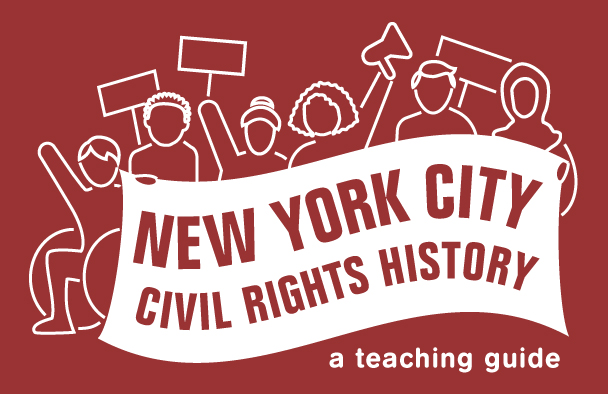- Black and Latina women (and those in solidarity with them) have led many struggles for educational justice in New York City. They have done so through a range of strategies and toward a range of goals and visions for education, from survival and citizenship to freedom and liberation.
Black people in the US always pursued education. They did so even when it was dangerous or illegal, because of laws prohibiting education for Black people, or because of threats of white violence. Both during and after slavery, Black adults met in churches, inside homes, or in other hidden spaces, to teach each other and their children.1 They built schools when governments refused to. Black people, including those living in poverty, committed their time, labor, and resources to education. They did so out of the belief that learning was a route to freedom, citizenship, and living their full humanity, even when the nation and its white majority tried to deny them all of these things.2
Black and Latina women New Yorkers made themselves part of this long tradition of struggle to secure education. For example, Black women founded schools for Black children in Brooklyn throughout the 1800s.3 They challenged legal segregation in New York State in the 1890s.4 They lobbied and organized to get access to education for Disabled people in the 1960s and 70s.5 Black women worked as mothers, teachers, and community advocates for a better education for their children. As New York’s Puerto Rican community grew over the 20th century, Latinas worked in solidarity with Black women, while leading their own educational justice struggles as well.6
Black and Latinx communities continued to define and redefine what they imagined just and liberatory education to be. They fought for more Black history and ethnic studies. They wanted the city to hire more educators of color. They demanded equal educational funding and pushed for power to make decisions about their children’s schools.7 Parents resisted segregation by race, including when the educational system used disability labels to segregate students of color.8 To fight against inequalities and bring their visions of education into reality, activists went to court, gathered in study groups, created institutions, blocked streets, and organized boycotts.
Black women activists and Latina activists played major roles in securing important improvements in education in New York City. However, gains have often fallen short of activists’ goals for a humane and just education, or have been rolled back over time.9
While we recognize that Black men and Latinos - as attorneys, ministers, educators, and fathers - contributed enormously to fights for a better education in New York City, Black and Latina women’s contributions to civil rights organizing are often overlooked.10 Therefore, we highlight them here.
-
Heather Andrea Williams, Self-Taught: African American History in Slavery and Freedom (Chapel Hill: University of North Carolina Press, 2007); James D. Anderson, Education of Blacks in the South, 1860-1935 (Chapel Hill: University of North Carolina Press, 1988). ↩︎
-
Anderson, Education of Blacks in the South; Kabria Baumgartner, In Pursuit of Knowledge: Black Women and Educational Activism in Antebellum America (New York: New York University Press, 2019); Jarvis R. Givens, Fugitive Pedagogy: Carter G. Woodson and the Art of Black Teaching (Cambridge, MA: Harvard University Press, 2021). ↩︎
-
Baumgartner, In the Pursuit of Knowledge. ↩︎
-
Elizabeth Cisco; Zoë Burkholder, An African American Dilemma: A History of School Integration and Civil Rights in the North (New York: Oxford University Press, 2021). ↩︎
-
Willie Mae Goodman; “Our History - AHRC New York," accessed February 9, 2023, https://www.ahrcnyc.org/about/history/. ↩︎
-
Ansley T. Erickson and Ernest Morrell, Educating Harlem: A Century of Schooling and Resistance in a Black Community (New York: Columbia University Press, 2019); Barbara Ransby, Ella Baker and the Black Freedom Movement: A Radical Democratic Vision (Chapel Hill: University of North Carolina Press, 2003). ↩︎
-
Erickson and Morrell, Educating Harlem; Jeanne Theoharis, A More Beautiful and Terrible History: The Uses and Misuses of Civil Rights History (Boston: Beacon Press, 2018). ↩︎
-
Theoharis, A More Beautiful and Terrible History. ↩︎
